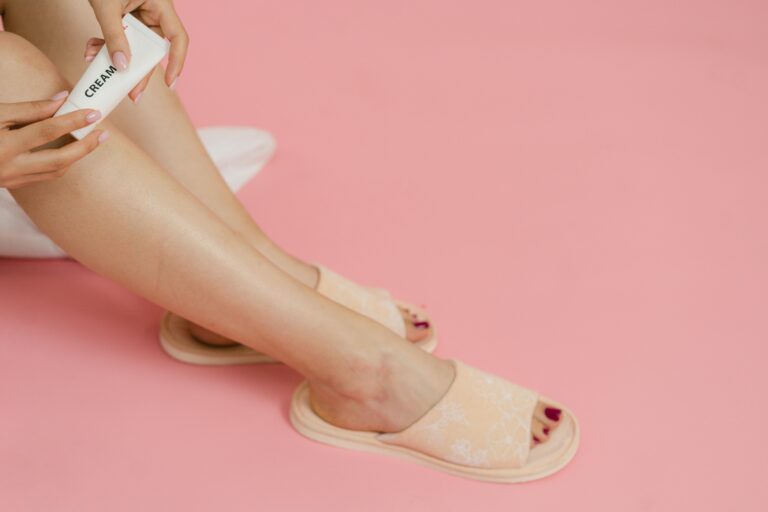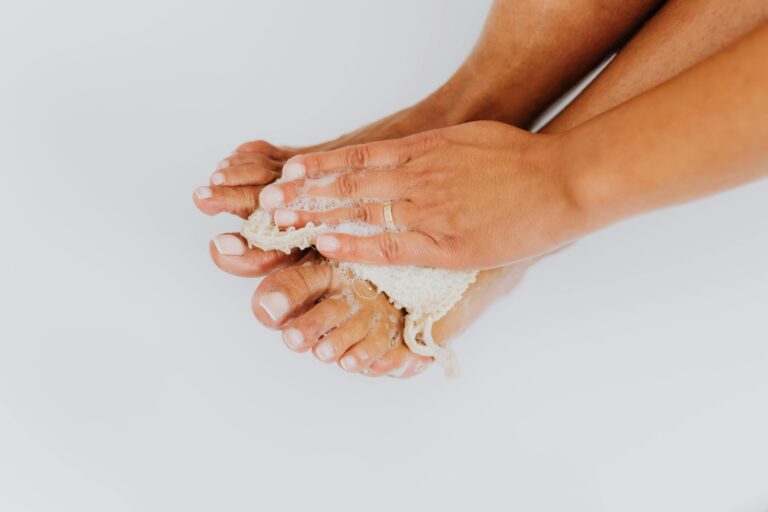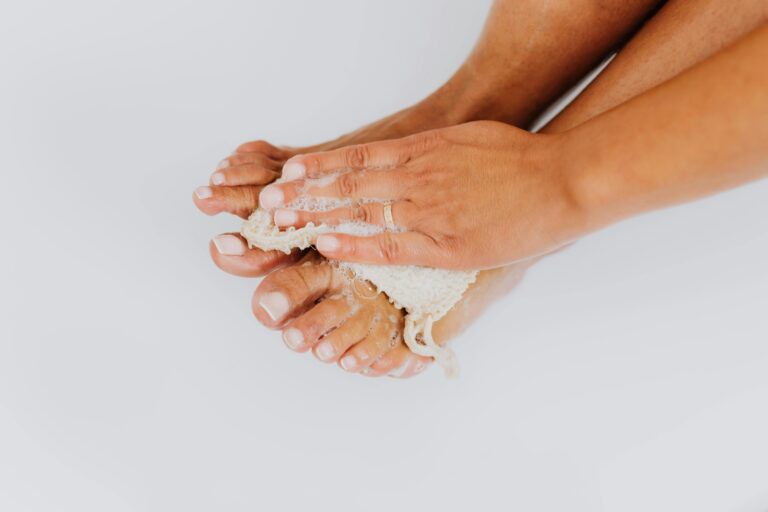Our feet are often overlooked in our daily grooming routines, despite their importance in our overall health and well-being. From carrying us throughout the day to providing support and balance, our feet deserve dedicated care. Creating a custom foot care routine tailored to your needs can help prevent common issues like dryness, calluses, and discomfort.
This guide will walk you through the steps to design a personalized foot care routine that ensures your feet remain healthy and comfortable.
Understanding Your Feet’s Needs
Before crafting your custom foot care routine, it’s important to understand what your feet need. This varies based on factors such as foot type, lifestyle, and any specific issues you might be experiencing.
1.1 Assessing Your Foot Type
Different foot types require different care. Here’s how to identify yours:
- Flat Feet: If you have flat feet, your arches are lower than normal. This can lead to overpronation, where your feet roll inward. Proper support is crucial, so opt for supportive insoles and shoes with good arch support.
- High Arches: High arches can cause less shock absorption and may lead to underpronation, where your feet roll outward. Choose cushioned insoles and shoes with ample padding to alleviate pressure points.
- Normal Arches: If you have normal arches, your feet are well-balanced. Regular maintenance, including moisturizing and nail care, will help keep them healthy.
1.2 Identifying Common Foot Problems
Address specific issues by recognizing common foot problems:
- Dry Skin: Often caused by a lack of moisture or excessive exposure to water. Regular moisturizing and avoiding harsh soaps can help.
- Calluses and Corns: Thickened skin that forms due to friction or pressure. Regular exfoliation and using cushioned insoles can prevent and treat these.
- Fungal Infections: Conditions like athlete’s foot require antifungal treatments and proper hygiene to prevent recurrence.
Crafting Your Custom Foot Care Routine
With an understanding of your feet’s needs, you can now create a tailored foot care routine. Follow these steps to develop a regimen that works for you.
2.1 Daily Foot Care
Incorporate these daily practices into your routine:
- Cleansing: Wash your feet daily with mild soap and water. Ensure to dry them thoroughly, especially between the toes, to prevent fungal infections.
- Moisturizing: Apply a thick foot cream or moisturizer to your feet, focusing on dry areas like heels and soles. This helps to keep the skin soft and prevent cracking.
- Inspection: Check your feet daily for any changes such as blisters, cuts, or changes in color. Early detection of problems can prevent serious issues.
2.2 Weekly Foot Care
Weekly foot care focuses on more in-depth treatments:
- Exfoliation: Use a foot scrub or pumice stone to remove dead skin cells and calluses. This keeps your feet smooth and prevents the buildup of hard skin.
- Nail Care: Trim your toenails straight across to avoid ingrown nails. Gently file the edges and remove any rough spots. This helps prevent infections and discomfort.
- Soaking: Treat your feet to a relaxing soak in warm water with Epsom salts or essential oils. This soothes tired feet and softens the skin, making it easier to exfoliate.
2.3 Monthly Foot Care
In addition to daily and weekly care, monthly treatments can provide extra benefits:
- Deep Conditioning: Apply a thick foot mask or overnight treatment. Cover your feet with socks after applying the mask to lock in moisture and let the treatment work overnight.
- Professional Treatments: Consider visiting a podiatrist or a professional pedicurist for a more thorough evaluation or treatment if you have specific foot issues.
Choosing the Right Products for Your Routine
Selecting the right products is crucial for effective foot care. Here’s what to look for:
3.1 Foot Creams and Moisturizers
Opt for creams specifically designed for feet, as they are usually thicker and more hydrating than regular body lotions. Ingredients like shea butter, glycerin, and urea are effective in keeping feet moisturized.
3.2 Exfoliants
Choose exfoliants with gentle ingredients. Products containing natural scrubs like pumice or sea salt are preferable to those with harsh chemicals.
3.3 Soaking Additives
Epsom salts and essential oils can enhance your foot soak. Epsom salts help relieve muscle tension, while essential oils like lavender or peppermint offer additional relaxation and soothing effects.
3.4 Nail Care Tools
Invest in high-quality nail clippers and files. Look for clippers with straight edges for toenails and files that are gentle on the nails.
Preventing Common Foot Issues
Taking preventive measures can save you from common foot problems. Here’s how to keep your feet in top shape:
4.1 Proper Footwear
Wear shoes that fit well and offer adequate support. Avoid high heels and tight shoes, which can cause blisters, corns, and other foot issues.
4.2 Hygiene Practices
Maintain good hygiene by keeping your feet clean and dry. Change socks daily and avoid walking barefoot in public areas to reduce the risk of fungal infections.
4.3 Regular Exercise
Engage in foot exercises to strengthen and stretch the muscles. Simple exercises like toe stretches and foot rolls can improve flexibility and circulation.
Conclusion
Creating a custom foot care routine tailored to your specific needs can significantly improve the health and comfort of your feet. By understanding your foot type, incorporating daily, weekly, and monthly care, choosing the right products, and taking preventive measures, you can maintain healthy, happy feet. Remember, consistent care and attention to your feet will pay off in the long run, keeping you comfortable and ready to tackle your daily activities with ease.
FAQs
1. How often should I exfoliate my feet?
Exfoliate your feet once a week to remove dead skin cells and prevent calluses. Over-exfoliating can lead to irritation, so stick to a weekly routine.
2. What’s the best way to treat dry, cracked heels?
Regularly moisturize your heels with a thick foot cream containing ingredients like urea or shea butter. Soak your feet, exfoliate, and apply moisturizer before bed, covering your feet with socks overnight for best results.
3. How can I prevent fungal infections on my feet?
Maintain good foot hygiene by keeping your feet clean and dry. Avoid walking barefoot in public places, and choose breathable footwear to reduce moisture build-up.
4. What should I do if I have persistent foot pain?
If you experience persistent foot pain, consult a podiatrist for a proper diagnosis and treatment plan. Foot pain can result from various issues, and a professional can provide targeted advice and solutions.
5. Can I use regular body lotion on my feet?
While regular body lotion can provide some moisture, foot creams are specifically formulated to be thicker and more hydrating. They are often more effective for treating dry, rough skin on the feet.



